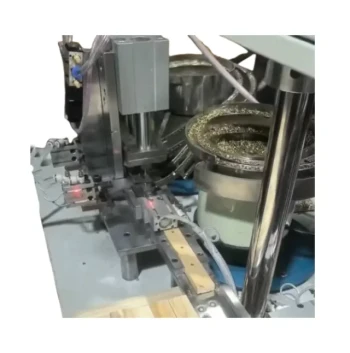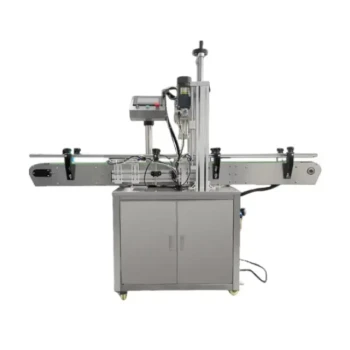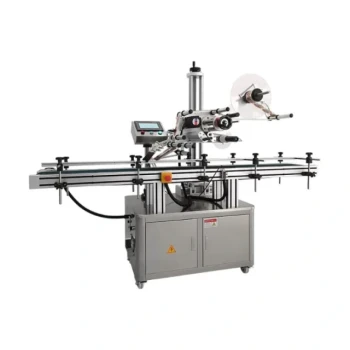In short, the feeding stage is when molten beeswax is precisely poured or fed into the flatting and embossing machine. The core objective of this step is to ensure the wax is distributed evenly onto a flat surface or conveyor belt, creating the initial, uniform layer that will become the final beeswax sheet.
The success of the entire beeswax foundation process hinges on the feeding stage. An inconsistent or uneven feed results in a flawed final product, making this step less about just adding wax and more about establishing a perfect, uniform starting point.
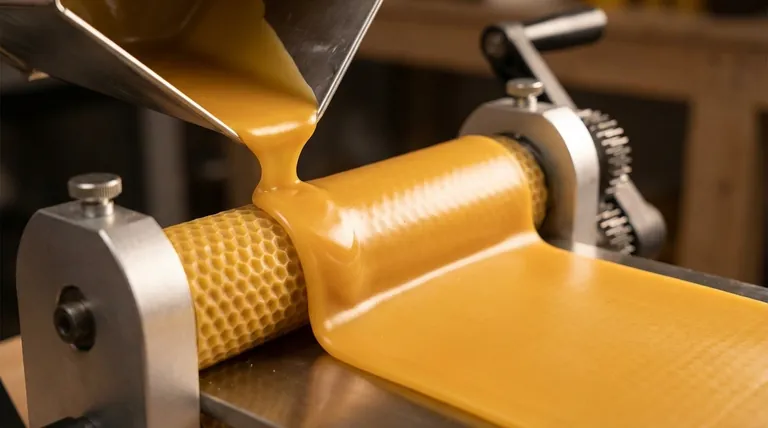
The Beeswax Foundation Process: A Step-by-Step Breakdown
To fully grasp the importance of the feeding stage, it's essential to see it within the context of the entire process, from raw wax to a finished, embossed sheet ready for the hive.
Step 1: Melting the Raw Beeswax
Before any feeding can occur, solid beeswax blocks or pellets must be transformed into a liquid. This is typically done in a separate wax melter or a dedicated heating device integrated with the main machine.
Achieving the correct temperature is critical. The wax must be hot enough to flow smoothly but not so hot that its properties are damaged.
Step 2: The Feeding Stage
This is the stage your question addresses. Once the wax is fully molten and at the optimal temperature, the machine carefully pours it into the processing system.
The key goal here is uniformity. The mechanism is designed to lay down a perfectly even ribbon of molten wax onto a flat surface, often a moving conveyor belt or the surface of a roller. Any variation in thickness at this stage will be magnified later.
Step 3: Flattening and Embossing
Immediately following the feed, the machine applies pressure to the still-pliable wax ribbon. This is accomplished using precision rollers or a press.
This pressure flattens the wax into a sheet of a specific, consistent thickness. Simultaneously, these rollers are often engraved with the hexagonal cell pattern, which embosses the design directly onto the sheet.
Step 4: Cooling and Solidification
Once the sheet is formed and embossed, it must be cooled to solidify and permanently hold its new shape. The machine allows the sheet to cool, after which it is cut to size and removed from the system.
This final sheet is now ready for use in beekeeping applications, most commonly as a foundation for bees to build their comb.
Understanding the Trade-offs and Pitfalls
The feeding stage appears simple, but several factors can lead to a poor-quality result. Mastering this step is crucial for anyone operating this equipment.
The Impact of Inconsistent Temperature
If the wax is too cool, it will not flow evenly, leading to thick spots and blockages. If it is too hot, it may not cool and set properly in the subsequent stages, or it could damage delicate machine components.
The Problem of Uneven Flow Rate
An inconsistent flow rate from the feeder is the most common cause of flawed sheets. This results in sheets that are thin in some areas and thick in others, making them weak, brittle, and less desirable for use in a hive.
The Risk of Contamination
The feeding system assumes the molten wax is pure. Any debris or contaminants from the melting stage will be fed directly into the machine, potentially causing imperfections in the final sheet or even damaging the delicate embossing rollers.
Making the Right Choice for Your Goal
Your focus during the feeding stage depends entirely on your end goal.
- If your primary focus is producing high-quality foundation sheets: Prioritize maintaining a consistent wax temperature and ensuring the feeding mechanism provides a perfectly even, uninterrupted flow.
- If your primary focus is maximizing process efficiency: Calibrate your wax melter and feeding system to work in harmony, preventing bottlenecks and ensuring the machine never runs dry.
Ultimately, mastering the feeding stage is the first and most critical step toward producing perfect beeswax foundation sheets.
Summary Table:
| Stage | Key Objective | Critical Factor |
|---|---|---|
| 1. Melting | Liquefy raw beeswax for processing | Precise temperature control |
| 2. Feeding | Create a uniform initial wax layer | Consistent flow rate and temperature |
| 3. Flattening & Embossing | Form sheet with hexagonal cell pattern | Precision pressure from rollers |
| 4. Cooling | Solidify the sheet into its final form | Controlled cooling environment |
Produce flawless beeswax foundation sheets consistently. The feeding stage is critical, and having the right equipment is paramount. HONESTBEE supplies commercial apiaries and beekeeping equipment distributors with the high-performance, wholesale-focused machinery and supplies needed to master every step of the process. Contact our experts today to discuss how our solutions can optimize your production line and enhance your output quality.
Visual Guide
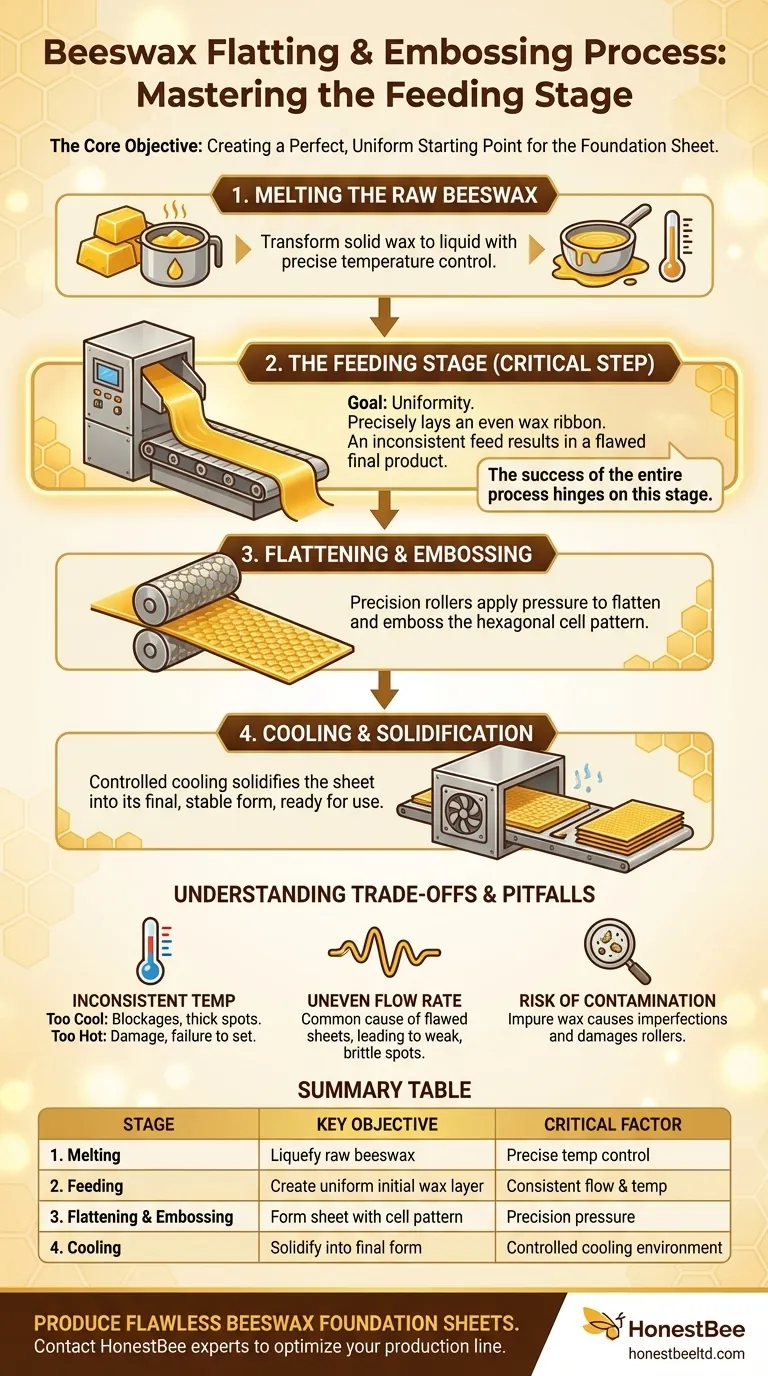
Related Products
- Economy Manual Beeswax Embossing Mill Wax Foundation Machine Roller
- Electric Beeswax Foundation Machine With Operating Tray and Wax Foundation Roller
- Electric Beeswax Flat Sheet Machine with Operating Tray for Wax Processing
- Manual Beeswax Flat Sheet Machine for Beeswax Processing
- Mini Desktop Bee Hive Frame Forming Making Machine
People Also Ask
- What is the application of the new style Silicone beeswax foundation embossing machine? Boost Honey Production & Hive Health
- What equipment is needed to make beeswax foundation? A Guide to DIY Wax Sheet Production
- What are the benefits of using a machine to produce beeswax foundation sheets? Achieve Superior Hive Health & Efficiency
- What is the process of making wax foundation with a manual roller? A Beekeeper's Guide to DIY Quality
- What are the main components of a beeswax foundation sheet machine? A Guide to Efficient Production







